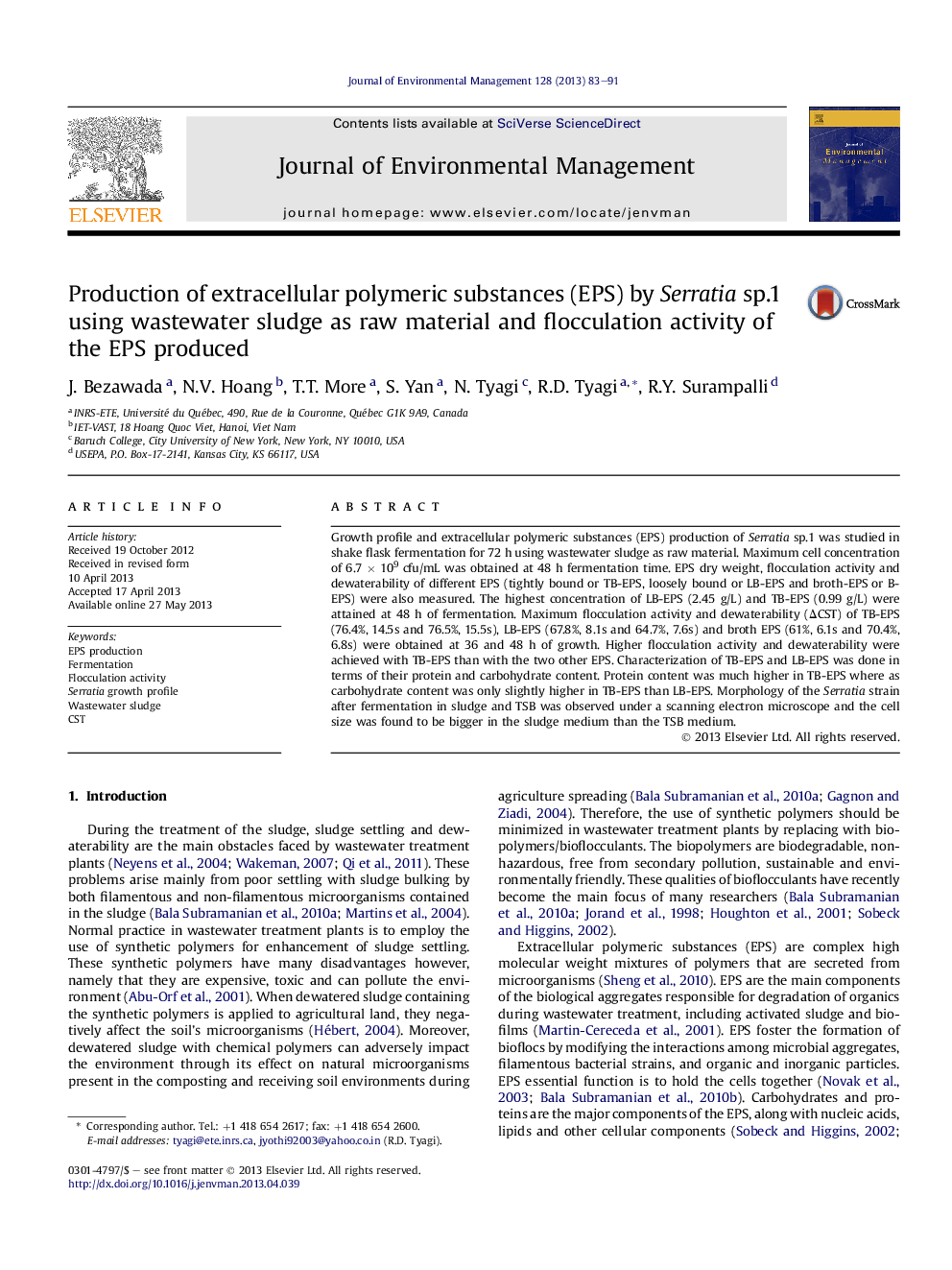| Article ID | Journal | Published Year | Pages | File Type |
|---|---|---|---|---|
| 7484143 | Journal of Environmental Management | 2013 | 9 Pages |
Abstract
Growth profile and extracellular polymeric substances (EPS) production of Serratia sp.1 was studied in shake flask fermentation for 72Â h using wastewater sludge as raw material. Maximum cell concentration of 6.7Â ÃÂ 109Â cfu/mL was obtained at 48Â h fermentation time. EPS dry weight, flocculation activity and dewaterability of different EPS (tightly bound or TB-EPS, loosely bound or LB-EPS and broth-EPS or B-EPS) were also measured. The highest concentration of LB-EPS (2.45Â g/L) and TB-EPS (0.99Â g/L) were attained at 48Â h of fermentation. Maximum flocculation activity and dewaterability (ÎCST) of TB-EPS (76.4%, 14.5s and 76.5%, 15.5s), LB-EPS (67.8%, 8.1s and 64.7%, 7.6s) and broth EPS (61%, 6.1s and 70.4%, 6.8s) were obtained at 36 and 48Â h of growth. Higher flocculation activity and dewaterability were achieved with TB-EPS than with the two other EPS. Characterization of TB-EPS and LB-EPS was done in terms of their protein and carbohydrate content. Protein content was much higher in TB-EPS where as carbohydrate content was only slightly higher in TB-EPS than LB-EPS. Morphology of the Serratia strain after fermentation in sludge and TSB was observed under a scanning electron microscope and the cell size was found to be bigger in the sludge medium than the TSB medium.
Related Topics
Physical Sciences and Engineering
Energy
Renewable Energy, Sustainability and the Environment
Authors
J. Bezawada, N.V. Hoang, T.T. More, S. Yan, N. Tyagi, R.D. Tyagi, R.Y. Surampalli,
